For those spending longer, you won’t want to miss these temples but you’ll be able to spread them over several days and include some of the less crowded temples as well. Many travellers find the most rewarding experiences are had at some of the slightly less visited spots. They appear in our see and do listing as Angkor ruins- our other favourites.
Try and spend at least three days at Angkor, remembering the longer you spend, the deeper your appreciation will be. Just as important, spending three days or more will allow you to break up your time so you don’t become temple saturated.
Don’t be daunted by this list - although it’s only the beginning. Take your time and you’ll find the temples will draw you back each day.
Angkor Wat, Angkor Thom, Bayon, Ta Prohm, Banteay Srei.

Photo: Mark BowyerLotus flowers in the moat that surrounds Angkor Wat
Angkor Wat
Twelfth century Angkor Wat, the largest religious monument on earth, is a staggering creation. Inspired by Hindu sacred design, it was commissioned by Khmer King Suryavarman II. It’s estimated to have taken 30 years to complete and as the name Angkor Wat - “city which became a temple” suggests, it was both city and temple.
The approach to Angkor Wat gives visitors an immediate appreciation of the scale of the monument crossing a vast moat along a causeway built with enormous sandstone blocks and flanked by naga shaped balustrades. But it’s not until you’re inside the temple’s cloisters that the extraordinary intricacy and beauty of the stone carvings is revealed.
A good look at Angkor Wat will take several hours and it’s best visited at least twice - early in the morning and late in the afternoon.
Angkor Thom
Angkor Thom is the 12th century walled city created by King Jayavarman VII, the man behind many of the most memorable temples of the Angkorian kingdom including Bayon, Ta Prohm, Preah Khan and many more.

Photo: Mark BowyerSouth Gate, Angkor Thom
Angkor Thom’s South Gate is the first glimpse most visitors get of the beguiling faces that mark out the temples created by Jayavarman VII. Scholars remain uncertain as to whether these faces depict the King, the Buddhist diety Bodhisattva Avalokitesvara - or a fusion of the two.
The Bayon (see below), is the centerpiece of the Angkor Thom complex which includes other Jayavarman VII creations including the Terrace of the Leper King and the Terrace of the Elephants.
Bayon
The Bayon may well the most dramatic of all of the Angkorian temples - an accolade that would surely please the prolific builder, King Jayavaman VII. More than 200 of those same beguiling faces first noted at the South Gate, adorn Jayavarman VII’s temple mount at the centre of the Angkor Thom city plan.

Photo: Mark BowyerThe Bayon
The Bayon’s walls also feature spectacular bas reliefs depicting daily life in the kingdom as well as frequent battles against the rival Cham civilisation. During the Angkorian period, the Cham Kingdom occupied what is today, southern Vietnam. Jayavarman VII’s rule was based on his defeat of Cham invaders in 1178.
The upper areas of the Bayon have been closed to travellers since COVID. We think a visit is much diminished if you don't get to the top area of the Bayon and see the incredible faces right before you. We hope it reopens soon and note there is no information advising on why it is closed or when it will reopen.
Ta Prohm
The most evocative of the main temples Jayavarman VII’s Ta Prohm has captured the imagination of travellers since European discovery in the late 19th century. Its magic lies in no small part in its stunning, destructive enmeshment with its jungle setting.

Photo: Mark BowyerTa Prohm
The decision to preserve Ta Prohm’s wild beauty was taken early on by the French and has given travellers to this day a sense of the romance of 19th century exploration - minus the malaria and other hazards. At peak times, the swarming tour groups mean that evocation requires a more fertile imagination.
The original French archeologists and restorers may not have had too many options. The towering kapok and fig trees are so completely entwined in the structure that their removal would cause large areas of the temple to collapse. The unstoppable growth of the trees as well as their inevitable future demise and plunge to earth pose great challenges for the conservation of Ta Prohm.
Dedicated to the King’s mother, the monastic temple contains some stunning carving work including some perfectly preserved apsara dancers.
More than 12,000 people are thought to have inhabited the temple at its height - supported by tens of thousands of surrounding villagers.
In 2023, a new pavilion opened at Ta Prohm following restoration that includes an enormous Buddha statue not publicly seen for decades or longer.
And in case you were wondering, yes, this is the temple that Angelina Jolie made famous in the 2001 film Tomb Raider.
Banteay Srei
10th century Banteay Srei temple is the oldest and most remote of those listed in our “essential” guide. It’s also the smallest and features some of the finest of all carvings in distinctive rich, red sandstone.
Around 30 kilometres from Siem Reap, Banteay Srei was fully restored in 1931. In the twenties Andre Malraux, who later served Charles De Gaulle as Minister of Culture, was arrested for stealing huge bas reliefs from the temple. They were fortuitously returned and Malraux’s political rise seems not to have been impacted by his attempted plunder.

Photo: Mark BowyerBanteay Srei
Banteay Srei means “Citadel of Women” and unlike other temples in this listing, it was created by Hindu priests rather than royal decree.

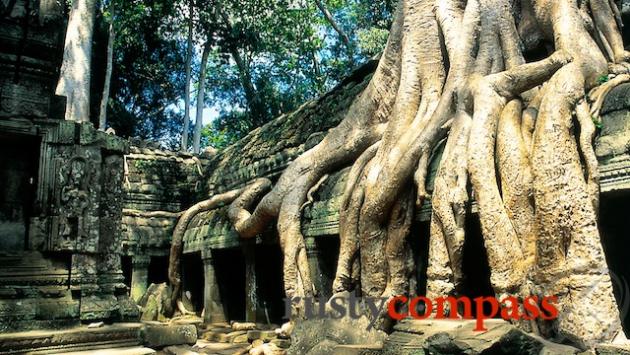
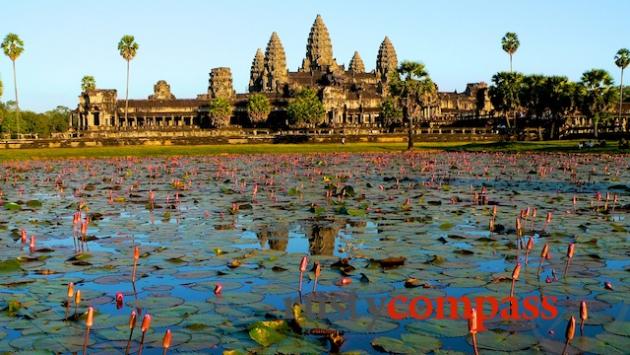
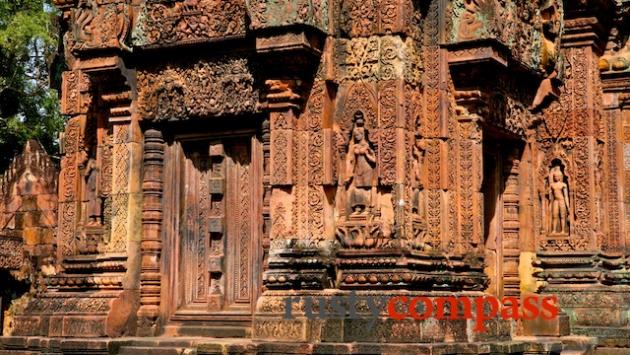
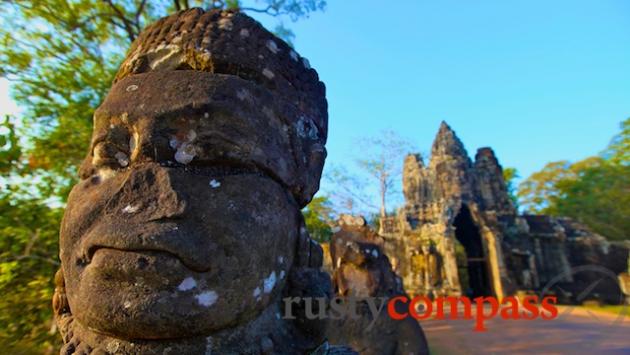
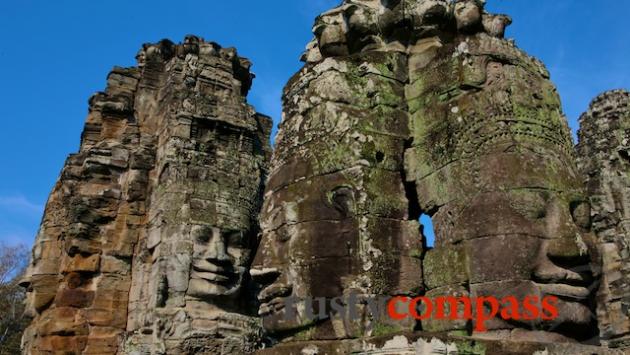







There are no comments yet.